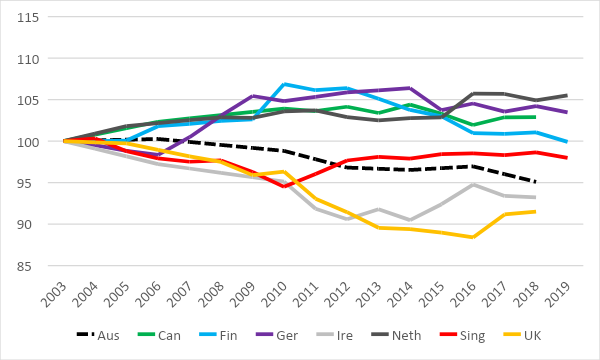Unlike in England, where the new Government has denounced housing targets as Stalinist in another sign of an uneasy relationship with its own 2019 manifesto (300,000 a year were pledged), the question of how many homes Scotland needs and where to put them is a live policy debate. The National Planning Framework 4 (NPF4), expected to be laid before Parliament this year, will set out for each local authority a minimum requirement of the number of homes for which land should be made available.
This important decision has taken on added salience because of the cost of living crisis. High rents and massive mortgages have left us little capacity to absorb economic shocks, whether external such as energy costs or the self-inflicted hike in mortgage rates following the budget announcements. Ensuring sufficient land is available for housing is crucial to bringing housing supply and demand into better balance and thereby improving affordability. It is also critical in ensuring there are enough shovel-ready sites to realise the Scottish Government’s commendably ambitious target of 110,000 new affordable homes between 2022-2032.
Housing targets are partly a practical necessity (aligning housebuilding with infrastructure) and partly a democratic middle ground which balances competing interests. These attributes may not endear them to those seeking ideological purity, but they chart a course through undesirable alternatives. Targets are a compromise between a libertarian free-for-all, where people can build wherever they choose, and an exclusive, communitarian beggar-thy-neighbour approach, where those fortunate to live near undeveloped land in and around cities and towns are able to exercise an absolute veto over its use. The former fails to recognise people’s desire to shape, debate and influence what happens in their local area. The latter fails to give voice to families seeking a home of their own, which meets their needs and aspirations, and most of the population who consider we are facing a housing crisis.
The housing crisis, while national in nature, must be solved on individual sites across the country. Without a clear target which local authorities are required to meet there will be a high risk of vocal local objectors successfully lobbying Councillors to prevent housebuilding. While those in need of a home make their voices known at a national level (evidenced by the prominence of housing issues in political debate) they do not, and cannot be expected to, lobby in favour of specific developments. Objectors and those commenting on planning applications play a valuable role in the process but without housing targets representing those in need of a home there would be a clear democratic deficit in planning for housing.
Because land for housing is rationed in this way, unlike the inputs for the other of life’s essentials, it is critical that targets are as accurate as possible with sufficient tolerance for changes over time. The risks of setting targets which are too low are profound – placing upward pressure on affordability and leaving local authorities chasing scarce land at high prices to deliver their affordable housing.
The Scottish Government is right to set out targets in NPF4. However, the figures in the 2021 draft are based on a flawed default methodology. The defaults have been changed in response to evidence submitted by some local authorities. However, these changes are haphazard; some local authorities put forward detailed, considered evidence such as households surveys, others submitted limited information probably due to pressures on resources. Remarkably, two of the least affordable local authorities in the country, East Renfrewshire and East Dunbartonshire (where house prices are 10 times average earnings) successfully lobbied for targets below the already low defaults.
There are two components to the Scottish Government’s methodology. Household projections are added to an estimate of households in existing need to give a target. Uncritical reliance on household projections leads to unsatisfactory housing outcomes being projected forward as Professor Glen Bramley has observed “If household growth has been artificially suppressed by the undersupply of new housing, then basing future need calculations on those lower growth figures will by necessity under-estimate that need”. This is acknowledged by the National Records for Scotland who produce the projections. The past decade or more has seen worsening affordability and housing outcomes we should be planning to improve upon, not perpetuate. No attempt has been made in draft NPF4 to quantify the additional homes needed in areas where houses are less affordable and have become less so over the last decade (below).
Image: Average house price multiples of workplace full-time earnings in 2021 (left) and change since 2011 (right). Using Registers of Scotland Average House Price data and ASHE full-time earnings by workplace location
The definition of existing need only recognises it in its most acute form; those in temporary accommodation and households which are both overcrowded and concealed. Concealed and overcrowded households are where two or more families live in one home without sufficient rooms. This is an exceptionally high bar missing many other forms of urgent need such as overcrowded households, adults and adult couples living with their parents, on waiting lists, in unsuitable or physically unfit homes and those in unaffordable homes. It is not fit for purpose and will underestimate the extent of housing need. Household surveys are needed to better understand existing unmet need.
The Scottish Government has been less bombastic than the UK Government in its growth ambitions, but its Strategy for Economic Transformation is clear and aims “to deliver economic growth that significantly outperforms the last decade, so that the Scottish economy is more prosperous, more productive and more internationally competitive”. Draft NPF4 should be changed to provide targets which are fit for purpose, fully understand existing need and address affordability challenges. These will be essential in providing the homes Scotland needs to deliver housing outcomes which significantly outperform those of the last decade and take pressure off household budgets.
Joe Larner is an Associate Director at Holder Planning based in Edinburgh, with around 8 years of experience focused on housing projects of all tenures in Scotland and England.



















